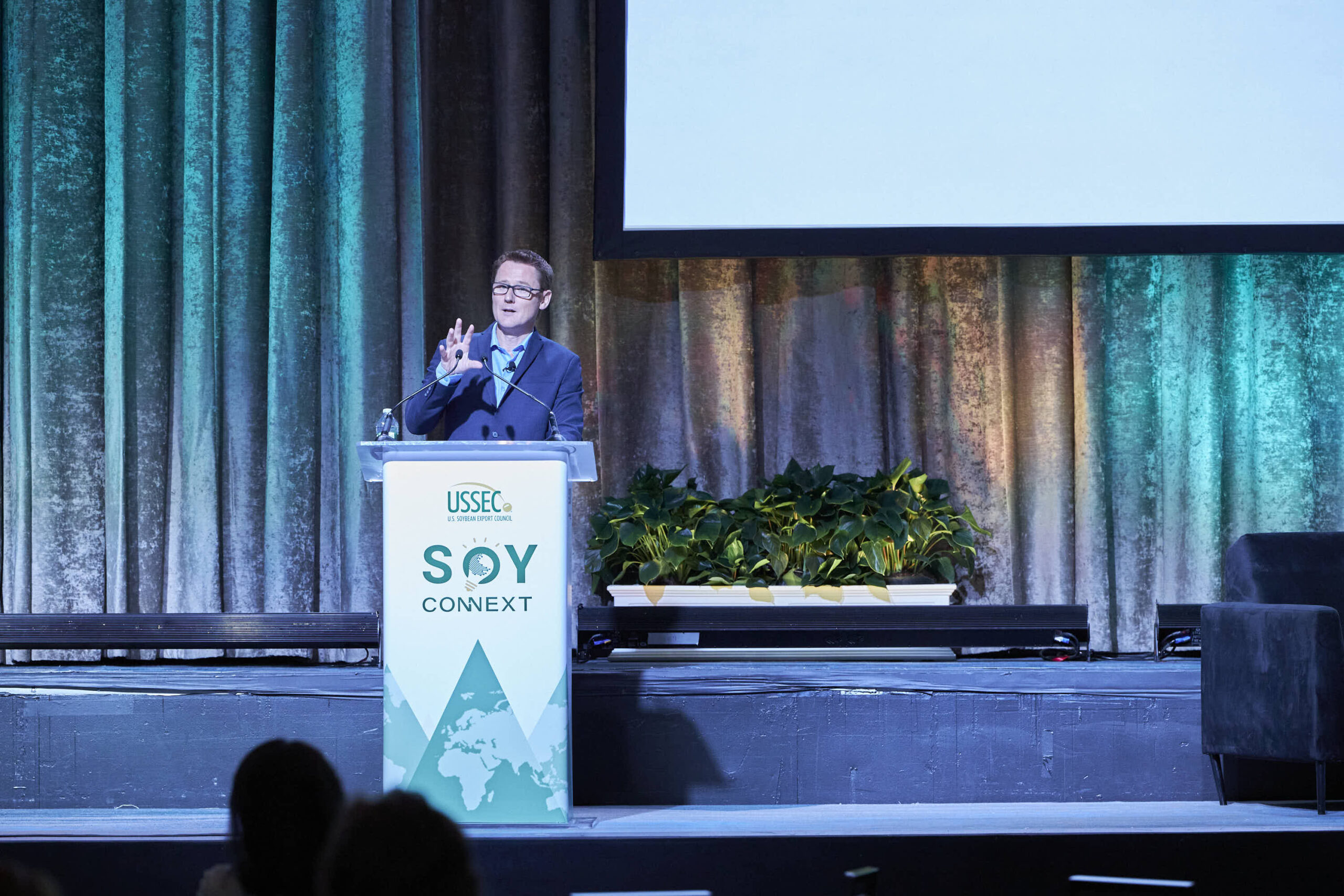
“Animals don’t need ingredients, they require nutrients,” Stephen Gunther, director of consulting and applied sciences for Wittaya Aqua International told Soy Connext attendees in New York City on August 22 and 23, 2023. “An ingredient is a package of nutrients.”
Gunther detailed how his team quantifies the value of ingredients for aquafeeds based on the nutrients they contain. This process helps feed millers and aquaculture producers understand what they receive when purchasing feed ingredients like soy.
“Companies buy protein, but digestible nutrients are what they get,” he said. “We want to show the value they get for what they buy.”
He explained that while the quantity of one or more key nutrients usually determines the price of an ingredient, its value is more complex. Value accounts for many factors like cost efficiency, transparency and much more. Wittaya Aqua conducted research to quantify the value of feed ingredients — including soy — with a focus on quality and nutritional value, as well as sustainability.
Gunther called out origin as one of the ingredient attributes that determine value, regardless of type of processing. He cited a feeding study found that tilapia fed with U.S. Soy outperformed those fed with soy from other origins, based on both growth and feed efficiency. Another study showed how the quality of soybean meal, including nutrient content, impacted the growth rate of shrimp.
“The animal tells us how well a product performs,” he said.
He traced that performance to soybean quality. Soybean farmers and crushers assess physical quality characteristics like size, foreign material and damage. High physical quality provides for more consistent processing so that feed millers and aquaculture producers can maximize use of nutritional quality.
He also described how Wittaya Aqua is calculating the value of the sustainability of ingredients using an indexing method. Factors related to the carbon footprint of an ingredient provide a sustainability score. His team is currently testing the incorporation of this data into a formulation sustainability score for aquafeeds. Those scores do not yet account for transportation or land use change costs.
This work found that both ingredient quality and sustainability provide value hidden by the most common method of estimating nutrient value in aquafeed.
“Shadow pricing is scenario-specific, and it gives some nutrients no real value,” Gunther said. “Economic valuation provides a more broad and general evaluation. It is based on what aquaculture producers use, and we’ve developed software to estimate value based on the unit price of nutrients.”
Using this method, he showed that on average, U.S. Soy is undervalued by about 30% as an aquafeed ingredient.
“U.S. Soy has potential to help lower carbon emissions of aquaculture feed,” he added. “Our research shows that the quality, quantity and sustainability of the nutrients in U.S. Soy offer value.”
Learn more about the benefits of U.S. Soy for aquaculture production.
This story was partially funded by U.S. Soy farmers, their checkoff and the soy value chain.
# # #